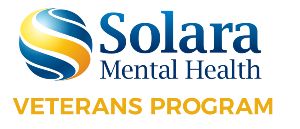What’s the Story with Attention-Deficit Hyperactivity Disorder (ADHD)?

Image courtesy of Pixabay.com
How do you know if you have ADHD (Attention-Deficit Hyperactivity Disorder)? What makes this condition recognizable?
This is the first of a series of articles on recognizing ADHD as an adult, the disorder’s backstory, and how to address it.
Attention-Deficit Hyperactivity Disorder is a condition that makes it difficult for an individual to pay attention, follow the thread of a conversation, and reign in impulsive behaviors. He or she may also be restless, reckless, and virtually always active. Note that even though symptoms of ADHD typically begin during childhood, hyperactivity will often minimize as a child grows into adolescence. However, common symptoms (problems with paying attention, poor impulse control, and disorganization) are also frequently seen to persist through an individual’s teens, on through college, and into adulthood.
Individuals with ADHD show a consistent pattern of three different categories of symptoms:
- Inattention (difficulty paying attention)
- Hyperactivity (being overactive)
- Impulsiveness (acting without thinking)
Three Primary Types of ADHD
ADHD/Inattentive Type (previously known simply as ADD). Individuals with this type the disorder typically get first labeled as children as dreamers, spacy, ditzy, unmotivated, lazy, unambitious, etc. One common trait is repeated forgetfulness (leaving things behind and/or losing them), and frequent “zoning out” in meetings or during conversations. He or she might miss an exit going home and not realize it for quite a while. An ADHD-prone individual may also run out of gas after forgetting to fill up during the work week. Friendships may suffer because the individual forgets get-togethers, or may wander past others without noticing them. Why? Because his or her mind is preoccupied with other things. This type of the disorder is the second most common type.
Maybe you’ve wondered if you have ADHD or perhaps something else. There is no blood or imaging test to diagnose the disorder, though if an individual as a child consistently showed signs of six of the following nine symptoms for more than six months (and on into adulthood), there’s a good chance for an ADHD/inattentive type diagnosis. Here is a frequently used ADHD checklist:
- Very easily distracted and sidetracked
- “Spacey” and forgetful throughout the day’s activities
- Will often avoid activities that take a lot of mental effort for long periods of time
- Doesn’t seem to pay attention when spoken to directly
- Frequently has a hard time staying on one task until completion
- Careless, sloppy, pays little attention to instructions and details
- Often loses materials and/or paperwork required for work and/or activities
- Typically disregards instructions, and does not follow through on chores or homework (usually because of a lack of comprehension, not out of rebellion).
- Has difficulty with organization and tidiness
ADHD/Hyperactive-Impulsive Type. This type is far less common in children, though this type of the disorder typically manifests the type of behaviors most associated with ADHD. Only about 5 percent of with the disorder are classified as this type, and usually signs of ADHD Hyperactive-Impulsive will have been recognized by the time a child is of preschool age. Most of the other ADHD diagnoses will be of the inattentive type, or the combined type.
Hyperactive/Impulsive individuals when children are typically viewed as “bratty,” obnoxious, unruly, wild, ill-behaved, etc. A hyperactive individual may have been very likeable as a child, but may have been considered to be an incorrigible “class clown.” Individuals who grow up with this type of ADHD are often thrill-seekers, restlessly active, etc. As children they may have grabbed toys from other children and/or refused to share long after classmates had learned the concept. Hyperactive child may have frequently continued to play at recess in school after the bell rang to go back inside, and may have frequently pretended not to hear parents and teachers. It would come as no surprise to see them push other children, yell, frighten/intimidate others, etc. Hyperactive-Impulsive children were most often those that would not nap, sit still, or stop disturbing a class by talking to others–they were often seen as “problem children.”
Your child grown into an adult with the hyperactive-impulsive disorder would likely have shown six of the following nine symptoms consistently over six months, many of which would have carried forward into adulthood:
- Frequent trouble doing leisure activities quietly
- Is ever on the go (think of someone being “driven by a motor”)
- Is a “pushy” driver, having difficulty waiting for his or her turn
- Talks excessively, rapidly
- “Fidgety” or “bouncy” with hands and feet, squirmy while seated
- Frequently stands up from sitting
- Excessively restless at inappropriate times
- Interrupts others/blurts out responses before the other person finishes talking
- Intrusive and “pushy” personality
Combined ADHD Type: Inattentive and Hyperactive-impulsive. This type of ADHD is by far the most common, with obvious symptoms of both types. Keep in mind that not all individuals with ADHD display the full list of symptoms – someone with ADHD may have shown all the symptoms of one type, or several from each.
Some combination of the above symptoms need to have been consistently present for at least six months, symptoms need to have been made manifest before the age of seven years and been more pronouncedly manifest than childhood peers of the same age, and symptoms need to have consistently persisted through adolescence and adulthood.
In the next article in our ADHD series, we will discuss known causes of the condition, diagnoses, and treatment.
Are you concerned about the possibility that you may have ADHD? It is treatable and manageable. If you or someone close to you need to talk to someone about mental health issues that seem overwhelming, we can help. Consider reaching out to our expert team at Solara Mental Health at 844-600-9747.






Leave a Reply
Want to join the discussion?Feel free to contribute!